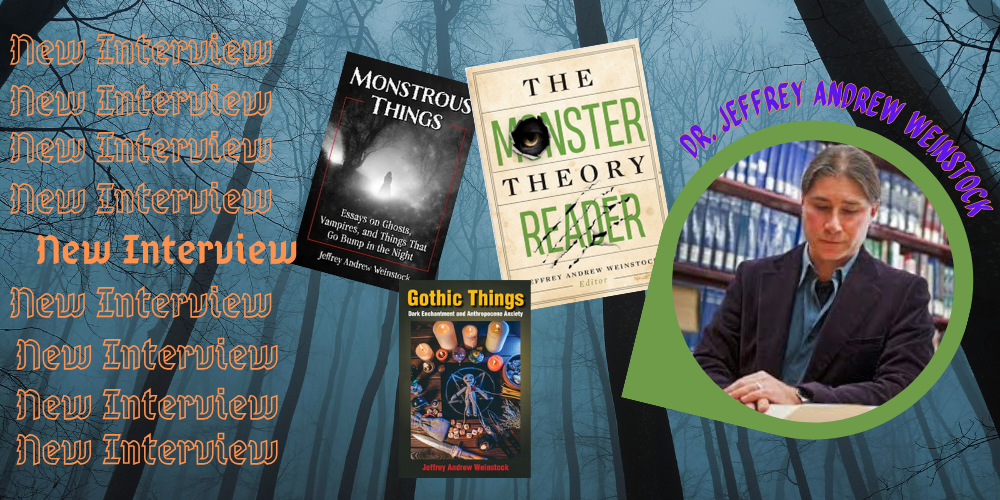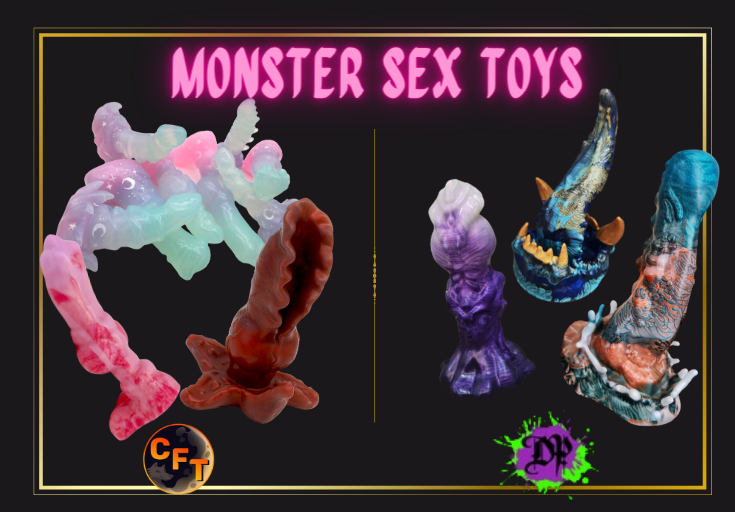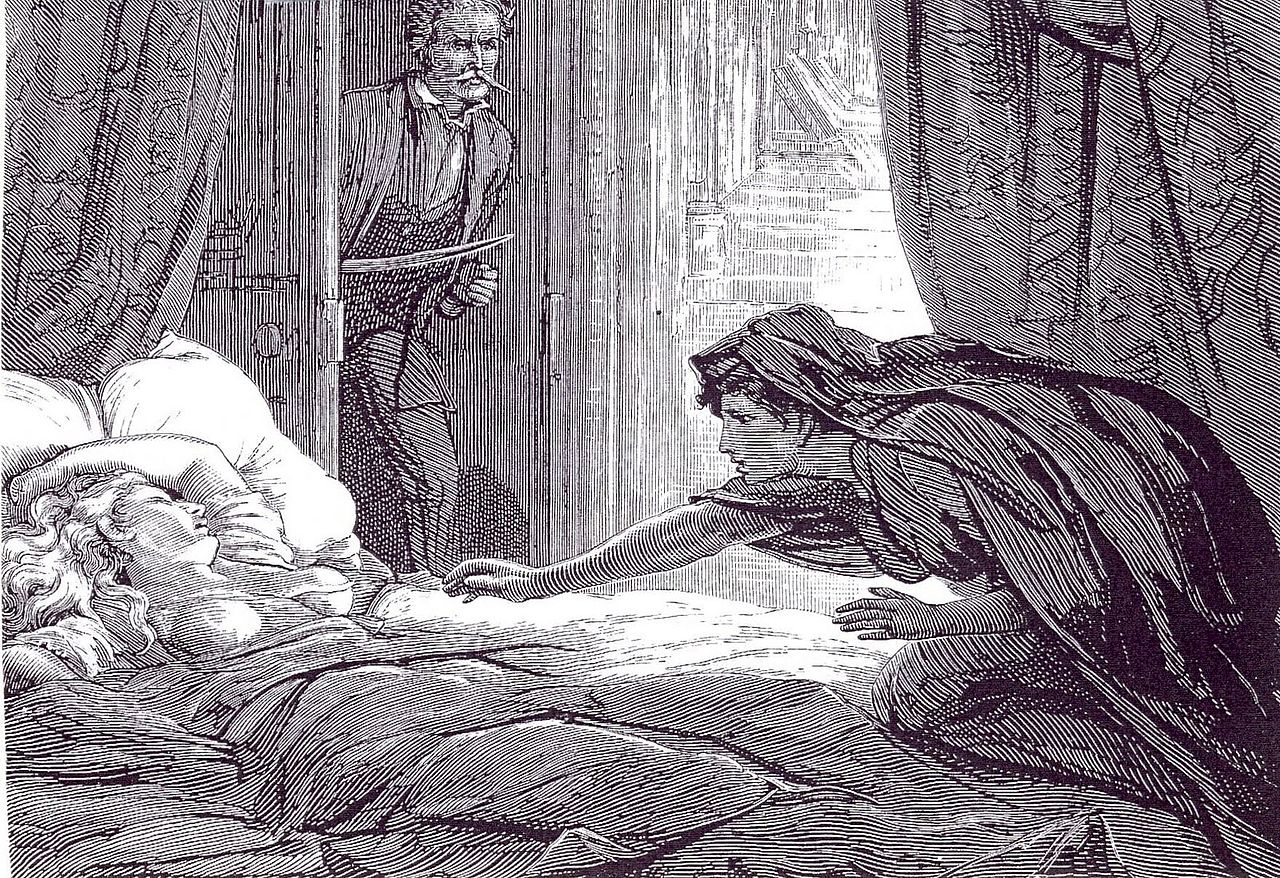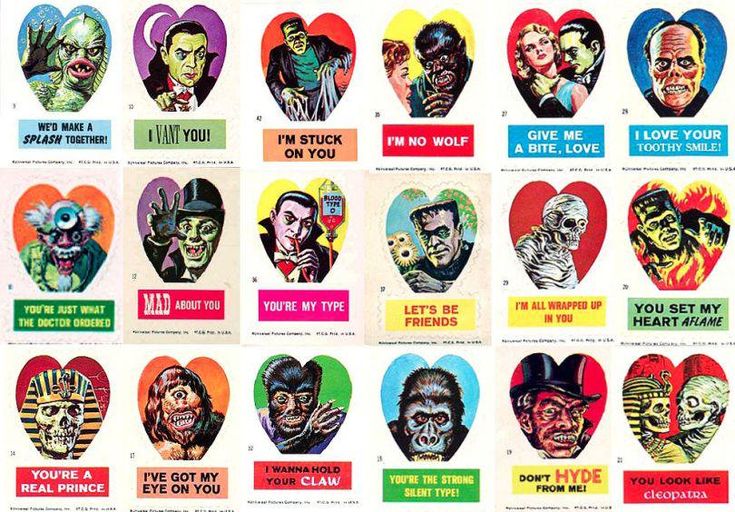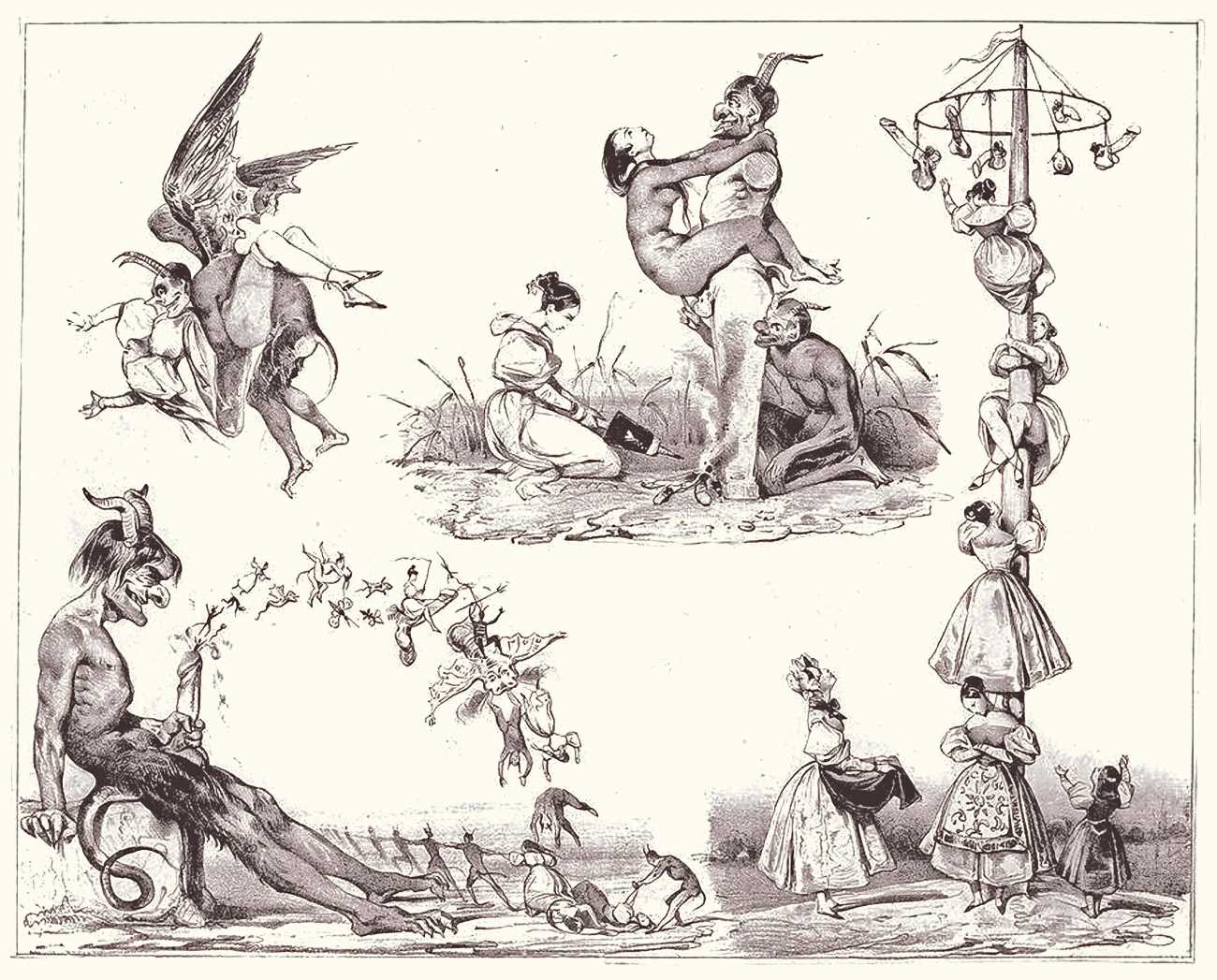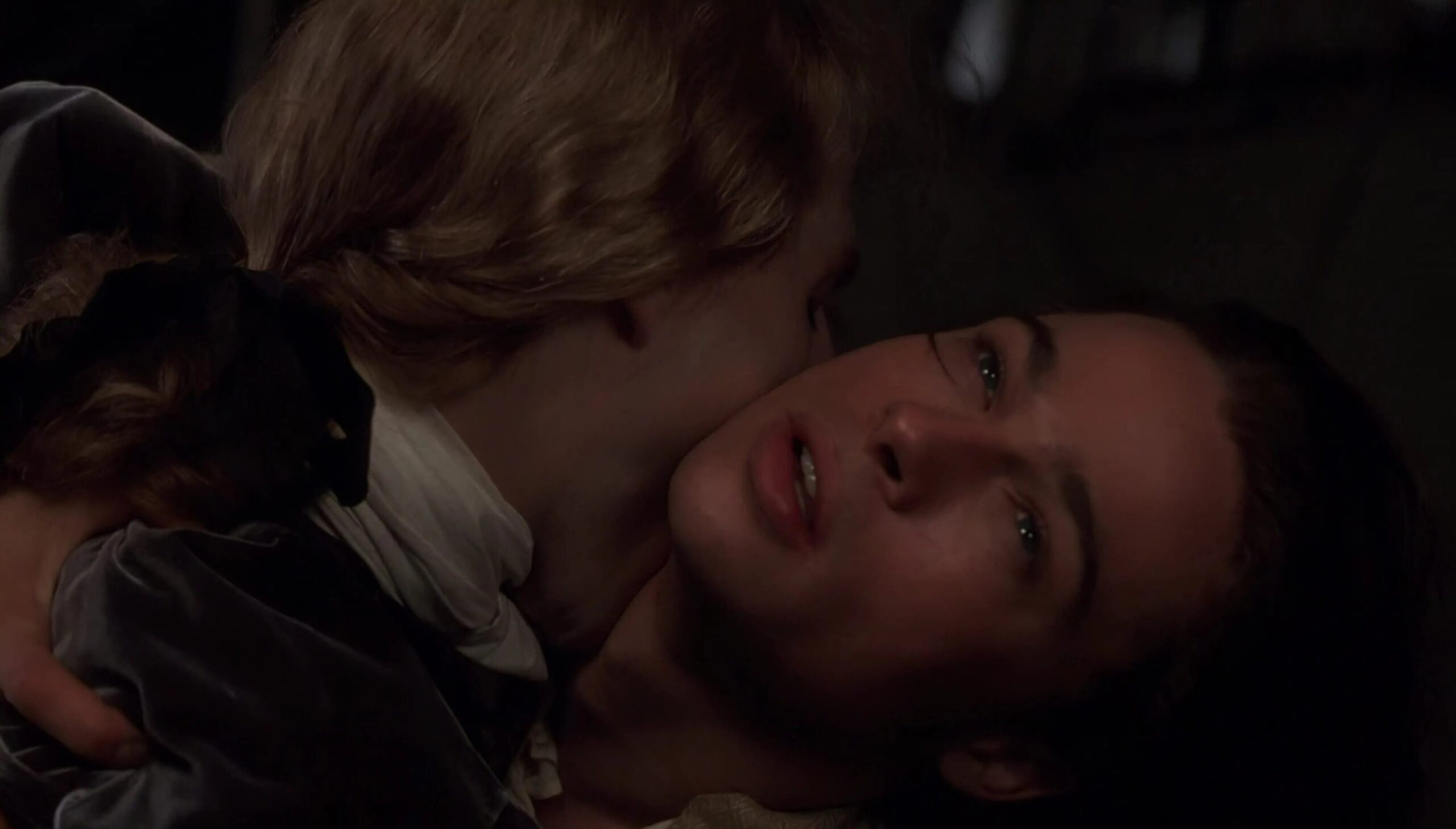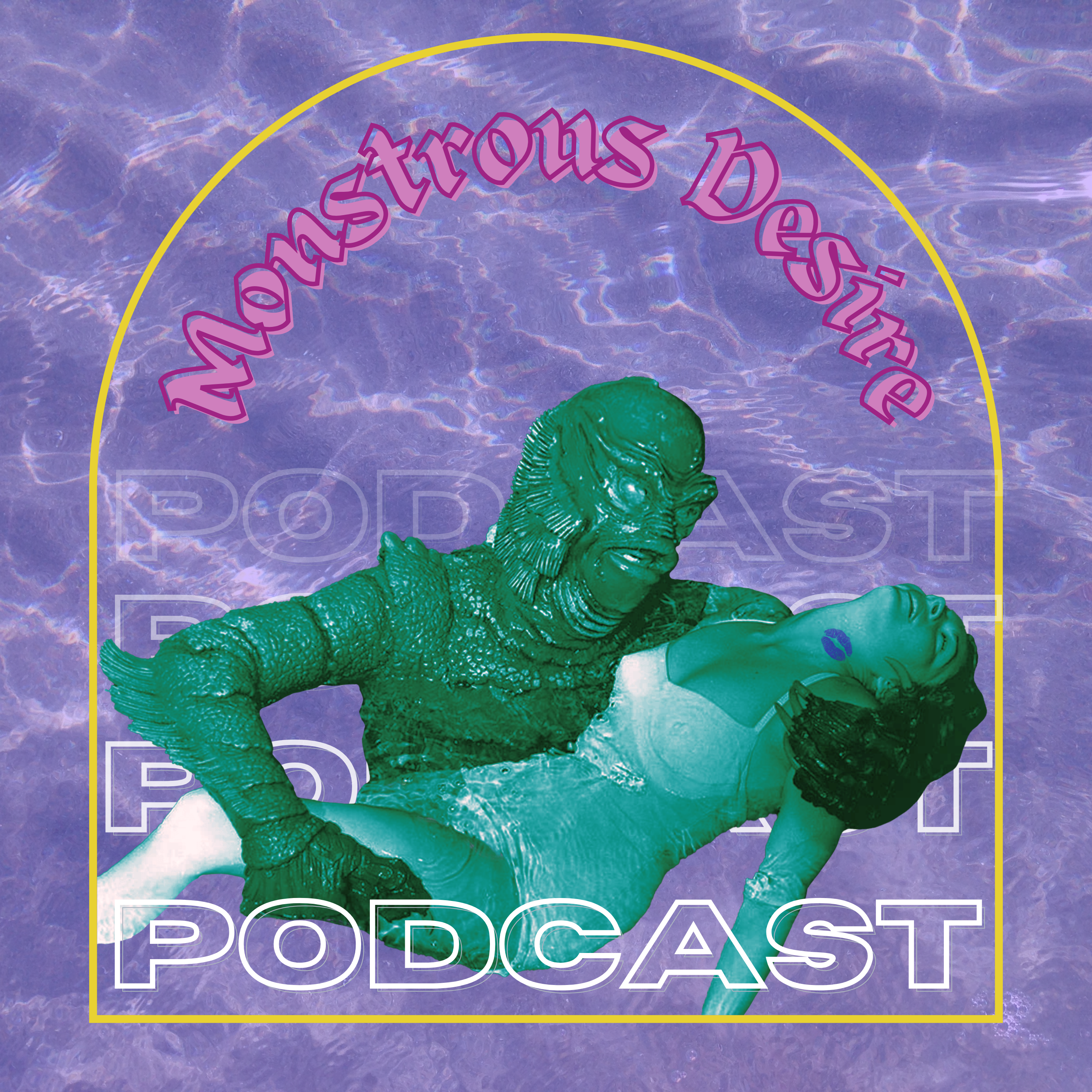Intro Interactive Data Slides Commentary: I was going to keep this survey open for much longer but I didn’t know that the survey platform I was using (Surveyking) not only capped my responses at 2,000, but didn’t allow me to download the data even though it allowed for respondents to continue taking the survey. I was only able to acquire the data after bitching to their customer service. Remember kids: squeaky wheels get greased…or whatever the fuck. So if you were one of the poor folks who didn’t get the time to take it, I’m sorry. But there will be a second breeding kink survey to confirm/deny this one’s findings! So don’t fret too much. Demographics 1. Age 2. Nationality 3. Gender Commentary: Trying to visualize the gender statistics was…a bitch, to put it bluntly. At its heart, gender is not concise; however, for nice, neat, and legible statistics, data demands for things to be concise! As such, while it was the right move to allow participants to choose as many genders to fit their identities, this meant that I spent more time trying to organize it all than I did collecting the data lmao. It presented the problem as well of: if gender is not concise and more often than not cannot be designated into neat boxes, then how does one portray gender data? I spent hours thinking it over, trying different graphs, only to bump up against contradictions that made me toss the graph into the trash. I tried, for example, an XY graph with each corner representing different gender expressions: Man, Woman, Genderfluid (middle), Agender/Non-binary, & Genderqueer/Nonbinary. This graphs works well until you realize that it still unintentionally places genders within dichotomous positions. There are many people who, for example, identify as demi-boy and demi-girl (both on opposite corners of the graph), but did not explicitly identify on the survey as genderfluid, and there’s no workaround on the graph for that (at least to my limited knowledge). I even saw someone tried to create a gender graph that looked like an actual, physics-representation of a black hole–but I had absolutely no idea how it worked. I finally decided that I would instead show how often certain gender variants were repeated. These circles are not hard-set categories, but rather, embodiments of how often they were chosen. I stopped demonstrating gender variants under repetitions of five because there were so many different singular combinations that I didn’t have the space to fit them all onto one page. 4. Ethnicity 5. Sexuality Survey Data 6.“Do you consider yourself a monsterfucker?” 7. “Do you having a breeding kink within your monster attraction?” vs “Do you having a breeding kink outside your monstrous attraction?” Commentary: You might be wondering why “Not at all” doesn’t have any data for Breeding kink in monster attraction, and, likewise, why “Only impregnation with non-living objects (e.g. eggs)” for Breeding kink outside monster attraction. “Not at all” only has data for the Breeding kink outside monster attraction because I removed respondents who put down that they neither had a breeding kink in monster fucking and outside of it. Having a breeding kink was one of the necessities so, out went those responses. As for the “Impregnation with non-living objects (e.g. eggs)”, obviously that was not going to be applicable to breeding fantasies outside of monster fucking. 8. “Does your monstrous attraction affect your breeding kink, if at all?” 9. “Do you have a child/children?” & “Do you want a child/children?” Commentary: This data right here? Yah, this didn’t surprise me at all. I see so often when people talk about the breeding kink on Twitter or wherever a misunderstanding of it completely. It’s always sneering derision of “Breeding kink? Isn’t that just human evolution? Everyone has that.” And yet, the breeding kink is driven by fantasy and often the thrill of something you don’t want (pregnancy and children). It’s playing with fire, in a sticky sense. And so it does not surprise me in the least, then, that the majority of respondents don’t have children, nor do they want any. 10. “In your monster breeding fantasies, are you more often than not:” 11. “Rank your TOP 3 emotional responses to the idea of getting pregnant by a human OR impregnating a human in real life:” Commentary: For clarification, this question (and the following questions), asked to rank their top 3 emotional responses. The top 3 emotional responses highlighted as those that were most picked for the respective first, second, and third places. While I like the format of these questions, and find the data fascinating, two comments during the data collection came to my attention that I would like to change for the second round. The first was that people wished for more neutral emotions, which totally makes sense. I am excited to see in the second round if the introduction of more neutral emotions changes the top 3 emotions. I theorize that the first place position will remain the same (as it wins by a landslide in each case), but that the second and third place will perhaps be different. Secondly, someone brought up that the idea of “getting pregnant or impregnating someone else” elicited very different emotions in them and that was a very good point. For the second survey, I will be separating those into different questions people can skip if it isn’t applicable to them and/or their fantasies. 12. “Rank your TOP 3 emotional responses to getting pregnant by a monstrous being OR impregnating a monstrous being:” 13. “Rank your TOP 3 emotional responses to consuming erotic media which portrays characters engaging in the breeding kink:” 14. “Rank your TOP 3 emotional responses to the idea of getting pregnant by a human OR impregnating a human in a fantasy:” 15. Select the kinks that you have: 16. Do you prefer your breeding fantasies to be: Commentary: What I’d really be interested to know is how people would rank their preferences, perhaps ranking their top
Second Survey Fundraising
Hello all! I come bearing exciting news: I am planning to do another monsterfucker survery, but this time officially! With the help of fellow monsterfucker-academic Phoebe Santillan, we are looking to duplicate our surveys to confirm initial results and then submit the research to scientific journals! Unfortunately, study funds are extremely expensive outside of the university setting. So, to help raise money for study expenses (paying for IRB certification & journal submission fees), we are selling monsterfucker sticker sheets! Pre-order from three different themed sheets (werewolf, tentacle, & scales) or buy all 3 in a bundle for a discount between 10/23 – 11/4 and you’ll also receive a free 3×3 ao3 tag sticker sheet! The free 3×3 sticker sheet will only be available during the pre-order so don’t miss out on it. Pre-order now and help us raise money to make the study of monsterfucking official! Pre-Order Stickers
Interview with Dr. Jeffrey Andrew Weinstock
Hello All! I am so excited I get to share with you my interview with Dr. Jeffrey Andrew Weinstock. He is a professor at Central Michigan University, where he teaches subjects on the Gothic, American literature, and pop culture. He has written prolifically about the gothic and monstrosity, having written or edited over 32 books and more than 100 essays and book chapters. His book publications include Gothic Things: Dark Enchantment and Anthropocene Anxiety (Fordham UP, 2023), The Monster Theory Reader (UMinnesotaP, 2020), The Vampire Film: Undead Cinema (Columbia UP, 2012), and Scare Tactics: Supernatural Fiction by American Women (Fordham UP, 2008). Join me as I talk to Dr. Weinstock about all things erotic monsters like: why are werewolves presented as hypermasculine and hypersexual? What’s the connection between eroticism and monstrosity? And why is there so much cum when talking about erotic monsters? Let’s find out. 0:00 / 0:00 Interview with Dr. Jeffrey Weinstock Want to listen to the interview on the go? The episode is available on both Spotify and Apple Podcasts. Click the icons above to listen to them in the streaming apps.
From Coffin to Closet: Dracula’s Queer Legacy
While Dracula was a figure whose mysterious and dangerous sexuality was primarily aimed at heterosexual women as a marketing tactic for all of the Count’s film history, the queer subtext of both the book and the movies remains persistent and, thanks to adaptations, more and more explicit. (Who could have foreseen this? The guy with a flair for dramatics and capes is queer? Not me!) Truthfully, I always found it a little silly when talking about strictly heterosexual vampires (is there such a thing?); like, what do you mean you are cursed to live forever and you’re not gonna spend your eternal night getting weird with it and exploring different avenues of pleasure? What else are you going to do? What do you mean you hypnotize your victims to feast upon them, men or women? Sounds fruity to me. ANYWAY… Today, our media is packed with great queer vampires: from the brilliant new AMC adaptation Interview with the Vampire to the goofy but lovable vampire crew from What We Do in the Shadows, our beloved gay vampires contextually come from a long line of queer coded vampires. So, where did they come from? And why does it always go back to Dracula? Stoker: Driven Wilde with Sinful, ‘Decadent’, Lust When it comes to Bram Stoker, the Irish author behind the classic gothic novel Dracula, there is a fair share of theorizing about both he and his text. Like how the character Dracula was perhaps not based off of Vlad the Impaler, but the Hungarian figure Elizabeth Bathory instead.1 Or that Bram Stoker himself was a closeted queer man who was once friends with the very gay author Oscar Wilde (The Picture of Dorian Gray) up until Wilde was tried and convicted of sodomy.2 What can I say, the academic world is a bunch of gossipy bitches who love to speculate. Except, does it really count as speculation and gossip if it is backed up by profoundly thorough research? That’s where Talia Schaffer comes into the picture. Schaffer argues, and quite convincingly I must add, that Stoker’s Dracula reveals a “homoerotic desperation, unconscious desire, and deeply buried trauma” that explores “Stoker’s fear and anxiety as a closeted homosexual man during Oscar Wilde’s trial”.3 Schaffer painstakingly combs over years worth of letters and writing from Stoker, Wilde, and Wilde’s family to piece together not just the “textual history of Stoker’s repressed sexuality” but the portrait of a desperate man profoundly affected by the trial and conviction of his friend (and possible rival-lover) Oscar Wilde, unable to fully commit to coming out of the closet.4 Long before Wilde was ever convicted and found guilty of “gross indecency” (aka homosexuality), Stoker wrote often to the gay poet Walt Whitman with passionate homoeroticism. In these deeply personal letters, Stoker guardedly referred to himself as belonging to “a kind” (specifically “my kind”), using coded language that set himself apart from the cultural norm and instead belonging to, in a sense, another species.5 This culturally aligned with the perception of queer people at the time as an “essential identity peculiar to a recognizable minority”.6 Bram Stoker (1906) Early sexologists, like Karl Heinrich Ulrichs, for example, argued that same-sex relations were not to be perceived as criminal, but rather as a biologically determined “Third Sex”. 7 Oscar Wilde (1882) During the 1870s, Stoker attended Trinity College in Dublin alongside Wilde where he immediately, and annoyingly, wiggled his way into the Wilde family and became thick as thieves with Oscar’s parents, especially his mother (much to Oscar’s chagrin, I can only imagine).8 Though both had many similar overlapping interests in philosophy and literature, especially their joint love for Whitman, the two could not have been more different: Stoker, seven years Wilde’s senior, was a know-it-all, goody-goody with an outstanding academic record, athletic hobbies, and was both president of the Philosophical Society and auditor of the Historical Society.9 Despite establishing himself during the 1870s as “an open member of that nascent homosexual culture centered around Whitman”,10 Stoker was more persistent about maintaining the status quo, especially relating to gender, and “believed in manliness, chivalry, and bluff good humor”.11 This was a stark contrast to Wilde who was only just beginning to question societal norms and found them “utterly irrelevant”.12 Wilde was uninterested in participating in the Philosophical Society despite joining and scoffed at Trinity’s meat-head athletic culture where boys “thought of nothing but cricket and football, running and jumping”.13 Unable to avoid one another in their very tight circles, Wilde was trapped in Stoker’s growing shadow. He constantly competed with Stoker for the affections of multiple people in his life: his parents, who viewed Stoker like the perfect golden-child, older brother; Wilde’s own girlfriend, Florence Balcombe, who left Wilde and hastily married Stoker in 1878 after keeping their engagement secret from everyone; and Sir Henry Irving, an English stage actor who was an idol of Wilde’s, that Stoker would later work with as Irving’s business manager.14 Could you imagine inviting this scoundrel around to family Christmas parties, forced to listen to your parents go on and on about how wonderful he is, only for him to steal and marry your girlfriend right out from under your nose? It would be grounds for murder for me personally, but for Wilde “Florence’s presence transformed a competition into an erotic triangle”.15 And for Stoker? These triangulated rivalries, especially his complex relationships with Wilde & Irving and Wilde & Florence, were ways in which Stoker could “disseminate his homoerotic desires into several non physical circuits”.16 And then everything changed in 1895. On May 24th, Wilde was convicted of sodomy, and suddenly Stoker, who was still processing his sexuality with guarded secrecy, pivoted fearfully into urgent and reactionary repression. Wilde would not be found guilty by English courts until 1912, however in that time Stoker pulled a full 180 about his beliefs not just concerning literature, but abandoned his public love for Whitman as well. He wrote two essays titled “The Censorship of Fiction” (1908) and “The Censorship of Stage Plays”
Monster Sex Toys: Creature Feature Toys & Darque Path Interviews
Join me as I speak with two insanely talented, wonderful, monster sex toy businesses: Creature Feature Toys and Darque Path! We talk about all things monster sex toys, from customer demographics, to spider-fucking, to whether or not public trends affect what toys are made. Creature Feature Toys https://youtu.be/Yb77-CyupQo Check out more of CFT’s incredible work on their website, follow them on social media, and make sure you read about their “Matchmaker Guide“! Darque Path https://youtu.be/lfj0SE97R2Q Craving gothic and scary toys for your collection? Look no further: Darque Path has got your back for all your spooky, sexy needs. Check out their toys, wax, and BDSM accessories on their website! Want to listen to the interviews but you’re too busy to watch the videos? No problem, champ, I gotchu: you can listen to the interviews on my podcast. Apple Spotify
The Monstrous-Feminine: The Devourer
Part 1 Woah, here she comes (Watch out boy she’s gonna chew you up) Watch out boy she’s gonna chew you up (Woah, here she comes) She only come out at night Well she’s a really hungry type (Woah, here she comes) Oh, the woman is wild, woman is wild No, I seen her here before Woah, woah, say (Woah, woah, oh woah) You gotta think about it She’s a maneater, yeah Hall & Oates (It was a genuine struggle to choose between Hall & Oates “Maneater” and Nelly Furtado’s “Maneater”, I can’t lie.) I am absolutely ecstatic to talk about the monstrous feminine. So far in this study, I’ve examined predominately male monsters (minus my beloved sirens and mermaids), but now we’re finally getting to the good stuff: the femme fatales, the she-demons, the, well, man-eaters. Femme Castrator, or, the Vagina Dentata When the movie Teeth (2007) first came out, it lingered in the cultural atmosphere for years afterward like pure fear aerosolized. The shock and sensationalism it produced amongst young boys translated into giggled, nervous jokes about being careful while screwing girls, or else… Too young to really grasp the movie’s intent or references, I had thought it grotesque. Who could ever come up with something so…weird? Teeth in a vagina? It caused a major eye-roll for me as a teenager, even years later. Because of course heterosexual men (to my presumption, at the time) would make up something so dehumanizing; that the source of their fear was rooted in something that they now couldn’t fuck or else be mutilated. Teeth (2007) Funnily enough, Freud—the neurotic, coke-addicted, egomaniacal psychologist, you know the guy (Jesus I made him sound so much cooler than he actually was)—would actually agree with teenage-me (to an extent). His theorization on what is officially called the vagina dentata is at its core (ahem) a reflection of men’s fears and phantasies pertaining to castration and mutilation. As Barbara Creed eloquently puts it, the vagina dentata “is the mouth of hell” that “points to the duplicitous nature of woman, who promises paradise in order to ensnare her victims”.1 The vagina dentata is the femme castratrice who will swallow you up and annihilate you. It is perhaps, at its most surface level analysis, a demonstration of “women’s dangerous propensities for threatening men’s self-control, autonomy, and power”, a reflection of the gendering of the grotesque.2 Despite how surreal and kooky it all sounds, like something Jordan B. Peterson would make up and cry about on some guy’s podcast, it still sounds all too familiar, doesn’t it? Not the toothy, maw genitalia—but the cultural relevance of the monstrous feminine creature, the femme fatale, who lures hapless male victims in with her beauty and sexuality only to devour them or lead them to their doom. Suddenly, all sorts of famous monsters spring to mind, both ancient and contemporary: beautiful Scylla, her lower body consisting of snapping hell-hounds and the tail of a fish; sirens & mermaids, tricking sailors to crash into the rocks and drown; female vampires hypnotizing their victims before taking a bite. Scylla figurine, late 4th BCE. National Archaeological Museum, Athens What I hadn’t understood as a teenager was that the vagina dentata was not new; its cultural references are vast and, in fact, extremely prevalent across the globe. It can be found in cultures in Polynesia, Japan, India, North America, South America, Africa, and Europe. In Melanesia, the game-playing Goddess of life and death, Le-Hev-Hev, was feared by Malekulan men because her name meant ‘That which draws us to It so that It may devour us’, or, ‘She Who smiles so that we draw near and She can eat us’.3 Worshiped as a Goddess, Le-Hev-Hev was embodied in the female genitalia and dictated whether souls passed on into the afterlife or devoured by Her if they lost to Her games.4 In India, numerous tales recall women and girls who acquire the vagina dentata, sometimes for no special reason really, and she harms her lovers without malice because she cannot help it.5 While in the Amazon, the Yanomami believe that one of the first women on earth possessed a shape-shifting vagina that could transform into a toothed mouth and devour her lover’s penis.6 Amongst the Indigenous peoples of North America, there are at least 30 references to the vagina dentata.7 In fact, the first time the vagina dentata motif was noted occurred in 1895 by ethnologist Franz Boas who was working on North American tales (although the OED claims it was actually anthropologist Robert Lowie in 1908 in an article on Native American rituals and stories published in the Journal of American Folklore).8,9 The Ponca and Otoe tribes, for example, tell the tale of the trickster Coyote who is invited to spend the night between two beautiful but supposedly man-eating sisters with toothed vaginas. It is revealed that the young women had been cursed by a witch who had given them their vagina teeth. Coyote kills the eldest sister when she attempts to bite him with her vagina and knocks out all the teeth in the younger sister’s vagina except for one, “leaving just one blunt tooth that was very thrilling when making love.”10 For many North American Indigenous peoples, their legends include the vagina dentata motif, like the legend of the meat-eating fish that lives in the vagina of the Terrible Mother, or the motif is preceded by stories about passage through a dangerous door.11,12 One such tale concerning maiming doors that heroes must pass through is attested to amongst the Tsilhqotʼin, Shuswap, and Nlakaʼpamux people in which four heroes are stuck inside a house after the stone door slams shuts; they are only saved by the quick thinking of one brother who jams the door with a stick, but loses his small finger in the process.13 A Bella Coola indigenous tale portrays a house whose door is guarded by a fierce dog and the door closes “like jaws” once the hero passes through.14 Amongst
Happy Valentine’s Day!
I Vant You! Hellooo, my monster lovers–Happy Valentine’s Day! For this very special romantic day, I thought to share with you Topp’s 1966 “Frankenstein’s Valentine Stickers” (which sold in a box set for an astounding 5 cents–can you imagine anything costing 5 cents today lol?). These treats weren’t just stickers though, they were trading cards too! Painted by Norman Sanders, the trading box featured a myriad of Universal monsters just lookin’ for luv. Their images were paired with creative, quirky, and sometimes downright creepy phrases like Dracula saying “You’re Just my Type” or the Mummy professing, “I’m All Wrapped Up In You”. What’s your favorite trading card?
LES DIABLES DE LITHOGRAPHIES
The Devilries Content warning: this post contains images of explicit sex (including scat) & racial caricatures Okay, so, you remember my post about demon copulation and how it’s influences extended into the Romantic and Gothic periods like Fuseli’s The Nightmare? Well, I was desperately trying to find the source behind the illustration (right) of this demon carrying his gargantuan penis in a cart while a woman gazes upon it with delight (sometimes dick really is that pretty). Well, a Reddit post speculated that while much of the erotica of the 18th and 19th century was anonymously produced, it was possible that it was a print by a Eugene Le Poitevin, or at the very least a duplication of one of his prints.1 So I thought to myself: alright, I wonder what else this guy has made? And boy howdy do the French not disappoint when it comes to lascivious artwork. It appears I’ve stumbled across the jackpot of monster fucking erotic art with Eugène Modeste Edmond Lepoittevin’s Les Diables de Lithographies (Devilish Lithographs) (1832)! In the wake of the Romantic era which produced popular books like Faustus and Mephistopheles, demons and devils were still freshly on the minds of Europeans. In early 1800s France, Eugène Modeste Edmond Lepoittevin published Les Diables de Lithographies (1832).2 At this time, Lepoittevin (born Poidevin, but preferred the bourgeoisie Lepoittevin or Le Poittevin) was known by polite society as an accomplished landscape and marine painter.3 He wasn’t just some shmuck: while still in his twenties, Lepoittevin was commissioned by the State to paint official works for the historical museum at Versailles and in 1849, he was appointed as Peintre de la Marine for the French Ministry of Defense.4 Les Bains de Mer, Plage d’Étretat (Sea Bathing, the Beach at Étretat), Eugène Lepoittevin (1864) However, Lepoittevin appeared to have a more raunchy and hidden side to him that dabbled not just in boats and calm shorelines. No, Lepoittevin also enjoyed drawing devils and demons engaging in erotic debauchery. Though many claim his first devilishly diabolic album was Les Diables de Lithographies in 1832, it appears as though it was actually Charges et Décharges diaboliques, which was published in 1830.5 This first portfolio consisted of 12 obscene lithographs (that over a hundred years later, would be banned from the U.S, but we’ll circle back to that soon enough). Two years later, Lepoittevin published Les Diables de Lithographies, which contained 80 illustrations on 12 black and white numbered lithographed plates, with two supplemental plates. In total, the album contained 14 plates with 115 illustrations (that’s a lot of dicks and vaginas)! Les Diables was an immediate hit: it was so popular that Lepoittevin followed up his devilries with Les diableries érotiques; Petits sujets des diableries; Bizarreries diaboliques; and Encore des Diableries. However, despite it’s success and popularity, Lepoittevin’s work is hard to come by as few of the copies survived, and even fewer in completion.6 In fact, Lepoittevin’s work was so raunchy that his first album Charges et Décharges diaboliques was banned in the United States during 1951. The portfolio was seized by customs in New York, but later released by the Kinsey Institute 7 years later following the Federal Court case United States v. 31 Photographs.7 Les Diables de Lithographies So, without further ado, here is Lepoittevin’s Les Diables de Lithographies~ Striking Similarities If I had a nickel for every time I saw an illustration of a demon carried his overtly large penis in a wheelbarrow, I’d have two nickels. Which isn’t a lot, but still strange it happened more than once. In all seriousness, though the artistic styles aren’t one and the same, the similarities points to two possibilities (as discussed by the Reddit poster): Lepoittevin may have anonymously produced the first illustration. Imitator artists took inspiration from Lepoittevin’s very famous work (which contained an image of a demon carting about his huge hog as seen above) and duplicated it within their own. Though I am not an art expert (I mean, I almost minored in art history, so that should count for something, no?), I find myself leaning more towards the theory that Lepoittevin published the initial piece anonymously. The reason for this is because though the two pieces side by side don’t look similar, at least stylistically, the first piece does share artistic stylization within Lepoittevin’s Devilries. Take, for example, the way Lepoittevin draws women, as seen below. They look mighty similar, no? Down to the woman’s neat hair pulled back into a bun and her coy and delighted expression. They even both share widow peaks! Likewise, though Lepoittevin’s demons appear in a varied manner, many of them share (what can only be attributed to) racially characterized hook-noses; curved, sharp ears; long, tapered tails; and thick fur growing along their mid-region and legs. (It should be noted that racism played a heavy role in the construction of monstrosity, especially in the West who used monstrosity as a way to not only Other ethnic minorities, but fetishize them as well. Racial fetishization and monstrosity will be discussed further in another post, because the lengthy topic deserves to be focused on individually. However, I would be remiss to not at least call attention to it here where it is present within the illustrations of people within colonial empires like France, especially within Lepoittevin’s work). Werewolf in London, Devil in Paris Lepoittevin was not the only person in France to be smitten by devils and demons fucking women. Rather, it seemed many artists in France were fixated on drawing depictions of carnal copulation. I suppose that checks out because who could possibly be more horny than the Devil besides The French. Artists like A. de Bayalos’s Diablotins and Michel Delaporte’s Récréations diabolico-fantasmagoriques carried on Lepoittevin’s diabolic torch.8 Achille Devéria, a well-known artist associated with some of the best erotic illustration from the 1840s, would publish his own erotic devil artwork in 1835 called Diabolico foutro-manie, which literally translates to “Diabolic Fuck-Mania”.9 A little off topic, but, Achille was profoundly horny: the man was a prolific artist, producing well over 3,000 works in his career from book illustrations like Goethe’s Faust (1828) to
Interview with Anne Rice
On Queering the Monster I know it’s been a while since I’ve updated the blog with any of my mad ramblings/musings, I have (unfortunately and blessedly) gotten a job so that has taken up much of my time and energy. However, I have been writing, reading, thinking, musing, and obsessing over erotic monsters still, especially monsters who are either implicitly or explicitly queer. More specifically, I have been reading the books (for anyone who is interested in the topic) Queering the Gothic edited by William Hughes and Andrew Smith as well as Monsters in the Closet by Harry M. Benshoff. Much of monstrosity, especially in relation to sexuality and desire, can be and is often interpreted as queer, both within the sexual sense of queerness and the ontological identity of someone or something that confronts the over-arching power structures, contorts it, threatens it, questions it. It’s in this liminal and murky space that monsters, good monsters, preside, oftentimes present in gothic literature, though not limited to it. Or, in the case of Twilight, bastardized into a faux version of itself, but I will touch on that later. As such, because I am tired of not updating my beautiful website, I wanted to share at least this wonderful video of the late and great OG monster-fucker herself, Anne Rice. Vampires, as Anne so perfectly states in the below interview, are the “international stars of the monster pantheon” and the “greatest metaphor for the outsider in all of us”. It is just one of the reasons that vampires, including Anne’s, are so beloved amongst the queer community. (Also, whomst amongst us doesn’t love the gay drama of the new Interview with the Vampire on AMC?) So, I’ll leave you with one monster fun fact: when Interview with the Vampire was released in 1994 (starring Tom Cruise and Brad Pitt, for those who have not seen it), Oprah Winfrey stormed out of the building, unable to finish it because she was so appalled by how “dark and oppressive” it felt to her. So spooked by the movie, she almost reconsidered interviewing Cruise later on!
Announcing the Monstrous Desire Podcast!
Wish there was an easier way to learn about the Monstrous Desire Study? Need to give your eyeballs a rest from (*ahem* my) long blog posts? No problem; I gotcha covered. The Monstrous Desire Study will be launching a podcast October 1st! Now you’ll be able to learn about the erotic monsters of (not-so) histories past while driving to work, cooking, hand-crafting puppets, or whatever else you do in your free time! All of the transcripts from the blog have been transformed into podcast audio with voice actors and atmospheric music, so now you don’t have to worry about keeping up with the blog! Listen to the first episode teaser in which I talk about Merlin and how he was conceived. It’s a tale as old as time, really: nun meets incubus, incubus impregnates nun, she gives birth to a wizard son, yadda yadda. You know how it goes. Listen to the Teaser Now! Anxious to hear the episode? Pre-Save the episode now to have it in your library, hot off the audio press, on October 1st! Pre-Save Now


